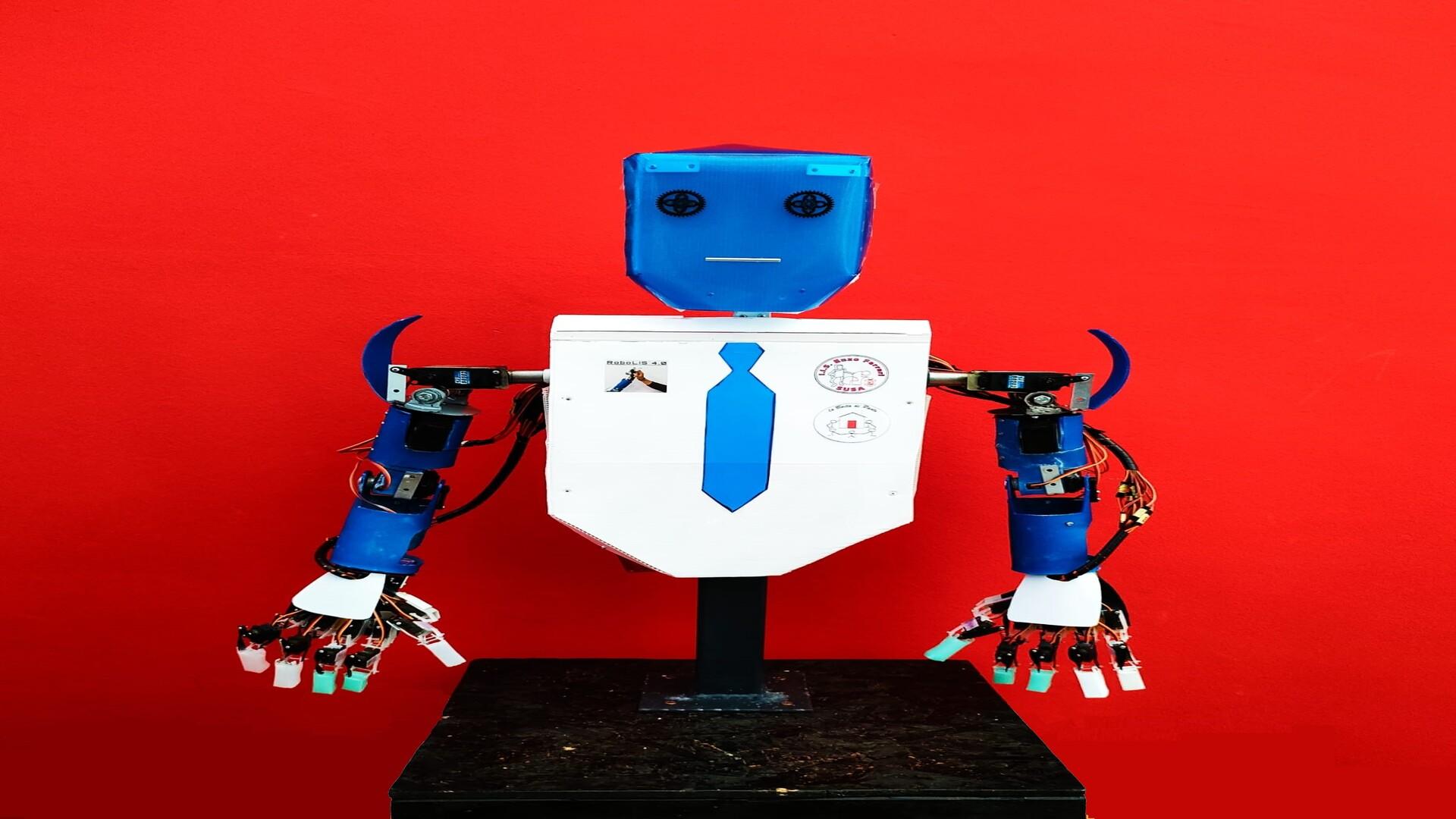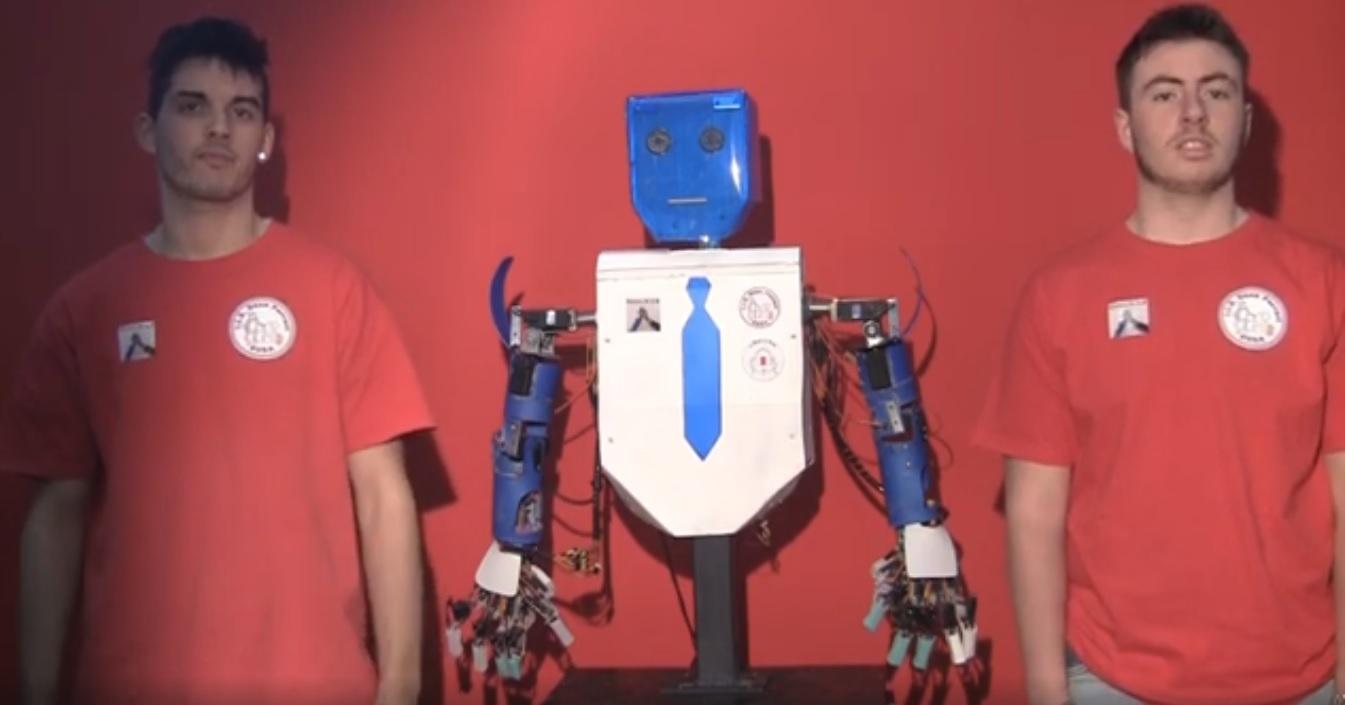Exhibitors 2023
- ART
- ARTISANS & NEW CRAFT
- FASHION & WEARABLES
- RECYCLING & UPCYCLING
- STEAM PUNK
- CIRCULAR ECONOMY
- PRODUCT DESIGN
- STARTUP
- BIOLOGY
- EDUCATION
- MUSIC & SOUND
- SCIENCE
- GAMES
- HACKS
- INTERNET OF THINGS
- OPEN SOURCE
- HOME AUTOMATION
- FABRICATION
- NEW MANUFACTURING
- ROBOTICS
- INDUSTRIAL AUTOMATION
- 3D PRINTING
- ENERGY & SUSTAINABILITY
- YOUNG MAKERS (< 18)
- WELLNESS & HEALTHCARE
- AEROSPACE
- FOOD & AGRICULTURE
- 3D SCANNING
- ARTIFICIAL INTELLIGENCE
- DRONES
- KIDS & EDUCATION
- CULTURAL HERITAGE
- RETROCOMPUTING
- VIRTUAL REALITY
- CYBERSECURITY
FideLIS, il robot umanoide interprete della lingua dei segni italiana.
Fidelis
The humanoid robot interpreting Sign Language
WHAT IS
The project is aimed at promoting and enhancing cultural heritage through the use of technology to promote inclusion. Today the LIS (Italian Sign Language) is translated only by people through the use of hands: what would happen if a robot were to explain a monument, a painting or an object that we are observing inside a museum? FideLIS wants to contribute to spreading the use of robotics for inclusion in the use of cultural heritage but also respect the environment; For this reason it has been designed and built entirely in an eco-sustainable way.
HOW IT WAS BORN
The idea is inspired by the prototype of a robotic arm created by ITIS Elettronica student Riccardo Pedone of the 4BE class for the use of only fingers, during movement. An interdisciplinary project team composed of: Prof. Enza Oliveto, expert in Italian Sign Language (LIS), Prof. Federico Sorrentino, head of the Robotics Department of our Institute, and Prof. Franco Di Ninno, referent of the Valle Susa robotic network, has designed a "humanoid" prototype to support people with hearing disabilities, expanding the spectrum of movements performed by the robotic arm and adding the coordination of the two limbs to adapt it to the possibility of reproducing sign language and for use in access to works of art and museum heritage of people with hearing disabilities.
HOW IT WAS BUILT
To create FideLIS we worked on the idea of plastic RECYCLING. The first phase was the recovery of disused waste material in basements and ecological centers in the area. In this way everything you need was found: HDPE type plastic for its technical characteristics, ball bearings but also broomsticks and pens. Each component of FideLIS is entirely handmade in an "artisanal" way to enhance the acquisition of skills in students according to active learning techniques: the individual pieces have been cut, welded, measured, modified, handmade by the students using the physics, electronics, computer science, mechanical, electromechanical and of course robotics laboratories present in the school. The robot is then made up of 32 servo motors for movement and is able to replicate, even now, some "signs" in the LIS language.
HOW DOES THAT WORK
The movement of the robot is driven by the 32 servo motors, which are controlled by the Arduino electronic system, based on a microcontroller board, capable of exchanging data, through a special development software, installed on the PC.
THE FUTURE OF FIDELIS
FideLIS is a robot capable of helping people with hearing impairment during the presentation of works and/or monuments. He will be able to translate any content, from the caption of a painting, to the explanation of the operation of an engine, to the description of any museum object, in Sign Language or logistical instructions for access to the rooms or even related to safety such as escape routes.
We believe in the use of robotics in museums and art galleries as well as in any type of exhibition space or event where any content can be translated for the enjoyment of people with hearing disabilities. FideLIS represents a step forward towards the future, an upgrade compared to the available aids to optimize inclusion processes in a sustainable and eco-sustainable way, also favoring compliance with reasonable accommodation indications for limited production and management costs.
The VISION of the school is to be able to make a small contribution to promote inclusion and contribute to offering greater usability to people with hearing disabilities of the artistic cultural heritage and useful contents to improve the quality of their life project.
"A FIDELIS IN EVERY MUSEUM!"
Riccardo Pedone, Gabriele Di Blasi - classe 4BE dell'ITIS Elettronica ed Elettrotecnica - Istituto Scolastico Enzo Ferrari di Susa (TO)
The working group of this project consists of:
Riccardo Pedone, Gabriele Di Blasi (students of class 4BE - ITIS Electronics and Electrotechnics), Federico Sorrentino (Head of the Department of Robotics), Franco Di Ninno (head of the Val di Susa Robotics network), Ivano Pasquetti (computer science teacher), Enza Oliveto (LIS interpreter), Andrea Fava (communication expert), Francesco Carlino (technical support and packaging), Vitaliano Vizzani (software consulting), Giorgio Antoci (technical support), Luca Tabbì (packaging).




















































































